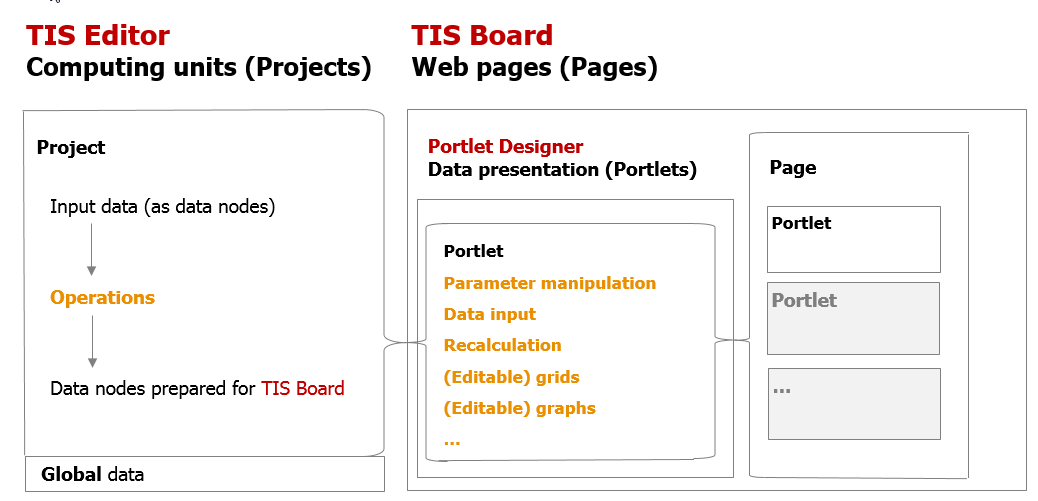Introduction
TIS is a powerful software framework for analyzing and visualizing time-oriented data as a web-based solution.
It consists of two main components. The TIS Editor allows to deal with the management and transformation of data. Data is stored in data nodes, each containing tables on which operations are performed. The TIS Board provides the means to present these data in static, dynamic, and interactive ways. To this end, portlets retrieve data from the TIS Editor and create (editable) graphs, tables, and interactive menus. Each portlet can then be used in one or more pages. A third component, the TIS Admin, provides an interface for user and rights management.

For many applications, TIS outperforms the use of spreadsheets like Excel in terms of scalability, usability, and maintenance because TIS
- is a web-based client-server application,
- is based on a relational database,
- provides well-defined operators tailored to the requirements of time-oriented data analysis,
- allows an easy integration of custom operators.
TIS further allows an easy import of external data from various data sources such as Excel and databases like MS SQL, Oracle, or PosgreSQL.
Instead of relating single cells, the TIS applies operations to data nodes, each usually representing a table in a relational database. This way, copying errors often encountered in spreadsheet applications are avoided.
Data nodes serve as basic building blocks that can be re-used for different calculations.
TIS projects can be widely parametrized with respect to heir own and their operation's settings.
The presentation layer is separated from the data processing layer.
The user interface, user management, storage and retrieval, versioning, and security management are all delegated to the framework.
